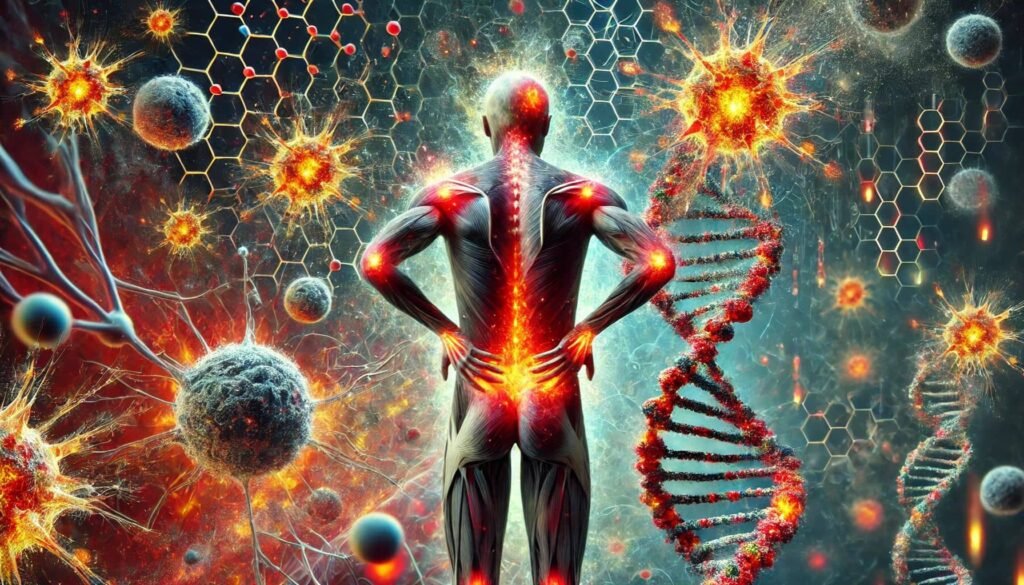In a world where modern living often disconnects us from nature, the ancient practice of earthing — also known as grounding — is making a resurgence.

Whether it’s walking barefoot on grass, or using specially designed grounding products, earthing is a simple, inexpensive and accessible way to enhance well-being.
Backed by growing scientific research, this practice has been shown to have a positive impact on our mental, emotional and physical health.
Let’s dive into the benefits and how it can help improve sleep, reduce stress, relieve pain and how you can make it part of your daily life.
Some Benefits of Earthing
1. Better Sleep
Earthing — the practice of reconnecting your body to the Earth’s natural energy — has been found to significantly improve sleep quality.
Sleep disturbances are often linked to imbalanced cortisol levels, the hormone that regulates stress and plays a critical role in the sleep-wake cycle.

Research suggests that grounding can help synchronize cortisol production with the body’s circadian rhythm, promoting restful and uninterrupted sleep.
Many individuals report falling asleep more quickly, enjoying deeper stages of sleep, and waking up feeling more refreshed after incorporating earthing into their bedtime routine. This is especially true for those using grounding sheets or mats throughout the whole night that facilitate direct skin contact with the Earth’s electrons while they sleep.
Beyond hormonal balance, earthing can reduce inflammation and stress, both of which can interfere with restorative sleep.
The calming effect of grounding may also help reduce nighttime overthinking or restlessness, common culprits of poor sleep.
Practical Tip:
Start by trying a grounding sheet or mat in your bedroom. These tools are designed to simulate direct contact with the Earth’s surface, allowing you to experience the sleep-enhancing benefits of earthing from the comfort of your bed.
Place the grounding sheet on top of your mattress where your skin can make direct contact. Combine this with other pre-sleep relaxation techniques for maximum results.
2. Reduced Stress
Stress is an unavoidable part of modern life, affecting everything from physical health to emotional well-being. Earthing, however, provides a natural, drug-free way to combat stress and restore a sense of inner calm.

By reconnecting with the Earth’s energy, grounding helps regulate the autonomic nervous system —the part of the nervous system responsible for managing involuntary functions like heart rate, digestion, and respiration.
This regulation promotes a balanced state between the sympathetic nervous system (responsible for the “fight or flight” response) and the parasympathetic nervous system (responsible for “rest and digest”).
Research has shown that grounding can lower cortisol levels, the stress hormone, reducing the body’s overall stress load. The calming effect of earthing can improve mood, enhance focus, and provide a sense of emotional stability.
In addition, the act of reconnecting with the Earth—whether through physical contact like walking barefoot or sitting on a grounding mat—can foster mindfulness, reduce mental clutter, and enhance feelings of well-being.
Stress relief from earthing affects us not just physically, but also mentally. Walking barefoot on a beach, sitting in the grass, or lying under the stars while grounded encourages moments of presence and gratitude. These mindful practices can significantly shift your perspective, helping you feel more connected to yourself and the world around you.
Practical Tips:
Incorporate grounding into your daily routine with simple activities:
- Barefoot walking: Spend 20 minutes walking barefoot on grass, sand, or soil. This allows the soles of your feet to absorb the Earth’s natural electrons.
- Outdoor relaxation: Take your shoes off while reading a book in the park or meditating on a blanket in your backyard.
- Indoor grounding: On colder days, use a grounding mat while working or relaxing indoors. Place the mat under your feet or hands to stay connected with the Earth’s energy year-round.
Consistency is key—make grounding a regular part of your routine to experience its profound stress-reducing effects.
3. Pain Relief
Chronic pain, whether caused by inflammation, injuries, or long-term health conditions, can greatly diminish quality of life. For many, finding effective pain relief involves a mix of medications, therapies, and alternative approaches. Among these, earthing has emerged as a promising, natural method to alleviate pain and promote overall well-being.

Research shows that grounding can reduce inflammation, a major contributor to chronic pain, by neutralizing free radicals in the body. This process restores balance to the body’s electrical charge and helps reduce the oxidative stress that contributes to body pain.
Additionally, earthing can improve blood circulation, enhancing the delivery of oxygen and nutrients to tissues, which supports healing and reduces tension in muscles and joints.
The benefits of earthing extend to various scenarios:
- Massage therapists who use grounding mats during their sessions report lower levels of pain, fatigue, and physical strain after long workdays.
- Athletes and fitness enthusiasts have found earthing beneficial for recovering from exercise-induced muscle soreness. Studies indicate that grounding can accelerate tissue repair and reduce delayed onset muscle soreness (DOMS), allowing individuals to bounce back faster after intense physical activity.
- Earthing can also benefit those with chronic conditions such as arthritis, fibromyalgia, or back pain by offering a consistent, non-invasive way to manage discomfort.
Practical Tips:
Incorporating a grounding mat into your daily routine is an easy and effective way to experience the pain-relieving benefits of earthing:

- At your desk: Place a grounding mat under your feet while working, allowing you to stay connected to the Earth for hours at a time. A mat with a long cord (e.g., 16 feet or 5 meters) offers the flexibility to move around the room without disconnecting.
- During rest or recovery: Use a grounding mat or sheet while relaxing on the couch, reading, or sleeping to aid in recovery and reduce pain overnight.
- Post-workout recovery: After exercise, take 15–20 minutes to sit or lie down on a grounding mat or walk barefoot on grass to help your body recover faster and more effectively.
The Emotional Connection
Earthing is not just about physical benefits; it fosters an emotional connection to nature. The act of touching the Earth can bring a sense of peace, grounding, and gratitude. Many individuals report feeling more centered and emotionally resilient after incorporating earthing into their lives.
How to Incorporate Earthing Into Your Life
Outdoors

- Walk Barefoot: Spend time walking on natural surfaces like grass, sand, or soil.
- Gardening: Work in your garden with bare hands and feet to increase direct contact with the Earth.
- Beach Days: Spend time at the beach, letting your feet sink into the sand and water.
Indoors
- Connect While You Work: Use grounding products in the office. Place them on your desk, under your bare feet on the floor, or on your favorite chair. Or place patches on the wrists or feet.
- Ground While You Sleep: Make the most of your resting hours by using grounding products in the bedroom and get a better night’s sleep at the same time! Grounding mats, sheets and pillowcases are your best bet in the bedroom, for a great night’s sleep.
The Science Behind Earthing
The Earth’s surface is a vast reservoir of free electrons, which act as natural antioxidants. These electrons are readily available to any conductive object in contact with the ground, including the human body.
When we reconnect with the Earth—whether by walking barefoot, lying on the ground, or using grounding tools like mats or sheets—these electrons flow into our bodies, initiating a series of physiological benefits.
One of the primary roles of these electrons is to neutralize free radicals—unstable molecules that can damage cells, proteins, and DNA in a process known as oxidative stress. Free radicals are a natural byproduct of the body’s metabolism but can be exacerbated by factors like pollution, poor diet, stress, and exposure to harmful chemicals.
Over time, oxidative stress contributes to inflammation, a root cause of many chronic conditions, including heart disease, diabetes, arthritis, and even aging itself.

Earthing helps combat this process by delivering a steady flow of free electrons, which stabilize free radicals and prevent them from causing further harm. This process has been shown to reduce markers of inflammation, support immune function, and promote tissue repair.
Studies also suggest that earthing may influence the electrical activity of the body, including heart rate variability and brain wave patterns, contributing to its calming and restorative effects.
Additionally, grounding appears to regulate the body’s bioelectrical system, helping to balance the autonomic nervous system and synchronize cortisol levels with natural circadian rhythms. This helps to reduce stress, improve sleep, and promote overall well-being.
Modern lifestyles often insulate us from the Earth’s natural energy:
- Rubber-soled shoes
- Concrete
- High-rise living
Such conditions create a barrier between us and the ground, stopping the flow of natural energy. Earthing bridges that gap, re-establishing a vital connection that humans evolved with over millions of years.
So easy to try!
Just step outside, kick off your shoes and socks, and let the Earth work its magic.
Unlike many health interventions, earthing is free or relatively inexpensive, accessible, and easy to integrate into your routine.
Whether you choose to embrace nature’s touch outdoors or invest in grounding products, the potential benefits for sleep, stress, and pain relief are too promising to ignore.
Reconnecting with nature might just be the easiest to improve your overall well-being.
So, why not give earthing a try? It’s a free and effective way to reconnect with nature and promote better health — one step at a time.



